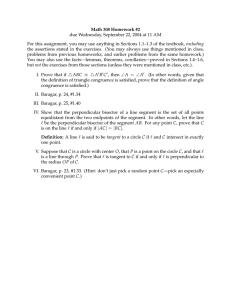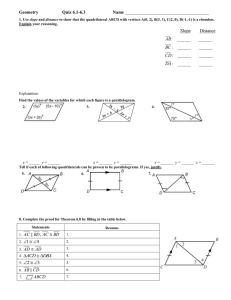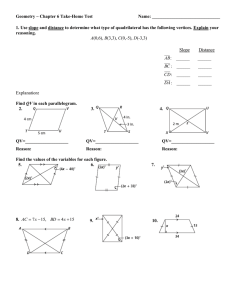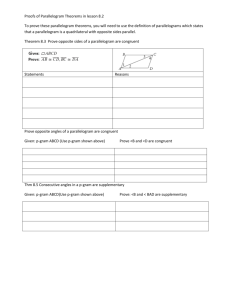Math 308 Homework #3
advertisement
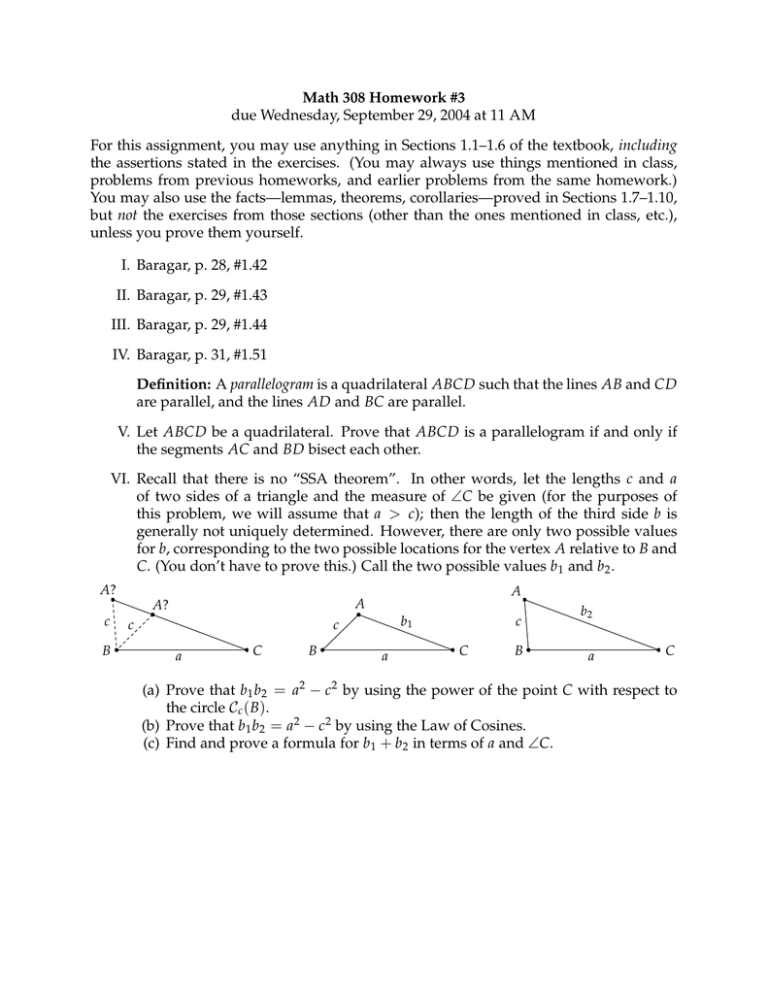
Math 308 Homework #3 due Wednesday, September 29, 2004 at 11 AM For this assignment, you may use anything in Sections 1.1–1.6 of the textbook, including the assertions stated in the exercises. (You may always use things mentioned in class, problems from previous homeworks, and earlier problems from the same homework.) You may also use the facts—lemmas, theorems, corollaries—proved in Sections 1.7–1.10, but not the exercises from those sections (other than the ones mentioned in class, etc.), unless you prove them yourself. I. Baragar, p. 28, #1.42 II. Baragar, p. 29, #1.43 III. Baragar, p. 29, #1.44 IV. Baragar, p. 31, #1.51 Definition: A parallelogram is a quadrilateral ABCD such that the lines AB and CD are parallel, and the lines AD and BC are parallel. V. Let ABCD be a quadrilateral. Prove that ABCD is a parallelogram if and only if the segments AC and BD bisect each other. VI. Recall that there is no “SSA theorem”. In other words, let the lengths c and a of two sides of a triangle and the measure of ∠C be given (for the purposes of this problem, we will assume that a > c); then the length of the third side b is generally not uniquely determined. However, there are only two possible values for b, corresponding to the two possible locations for the vertex A relative to B and C. (You don’t have to prove this.) Call the two possible values b 1 and b2 . A? c B A A A? c b1 c a C B a c C B b2 a C (a) Prove that b1 b2 = a2 − c2 by using the power of the point C with respect to the circle Cc ( B). (b) Prove that b1 b2 = a2 − c2 by using the Law of Cosines. (c) Find and prove a formula for b1 + b2 in terms of a and ∠C.
